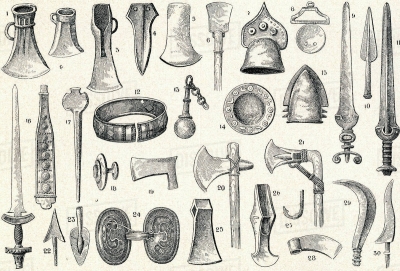
PREHISTORY
Our distant past, before writing was invented, is called prehistory. Without written records, we rely on the objects that prehistoric people left behind them, such as tools, to find out how they lived. The first tools, made around 2.5 million years ago, were of stone, bone, and wood. Later, prehistoric people learned to use metals – first copper, then bronze, and finally iron.
HUNTER-GATHERERS
For most of prehistory, people lived by hunting animals and gathering wild plant foods. Hunter-gatherers lived in small bands, which were often on the move, following herds of animals and looking for fresh sources of food. The first humans lived in Africa, but gradually spread across the globe, settling first in Asia and then Europe. Humans reached Australia by 50,000 BCE, and the Americas between 30,000-14,000 BCE.
THE AGE OF FARMING
Between 10,000-9,000 BCE, people in the Middle East invented a new way of life – farming. They learned to store and sow the seeds of plants, and to breed animals, such as sheep and goats. By controlling their food supplies, farming people were able to settle down in permanent villages. As the supply of food became more regular, populations rose and the farming way of life spread.
COPPER AND BRONZE
The next discovery was how to make tools from metals. Around 5,000 BCE, people in Europe and Asia learned how to extract copper by heating certain rocks. They used the bright metal to make tools and jewellery. Around 3,500 BCE, they discovered that adding a small amount of tin to copper made a harder metal, called bronze.
THE IRON AGE
Although iron is the commonest metal on Earth, it was the last to be used to make tools. Unlike copper and tin, iron does not melt when heated in a fire. People did not learn how to shape iron, by heating and beating it with a hammer, until around 1,550 BCE. While bronze was a metal for the rich, everyone could afford iron.
Picture Credit : Google




